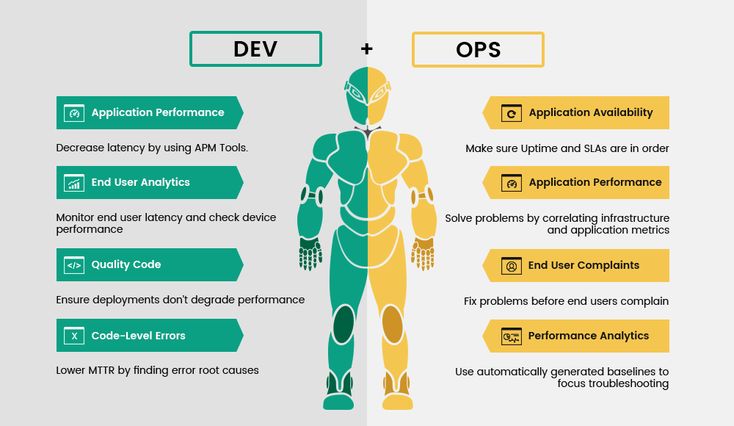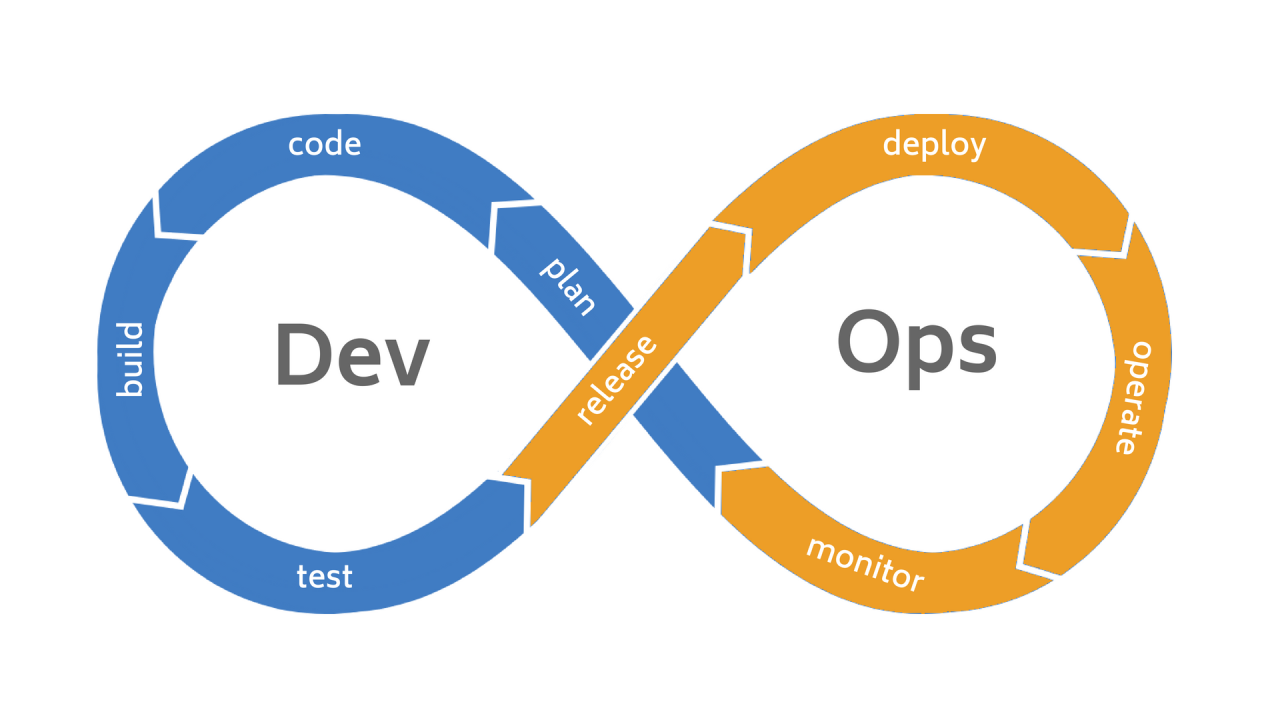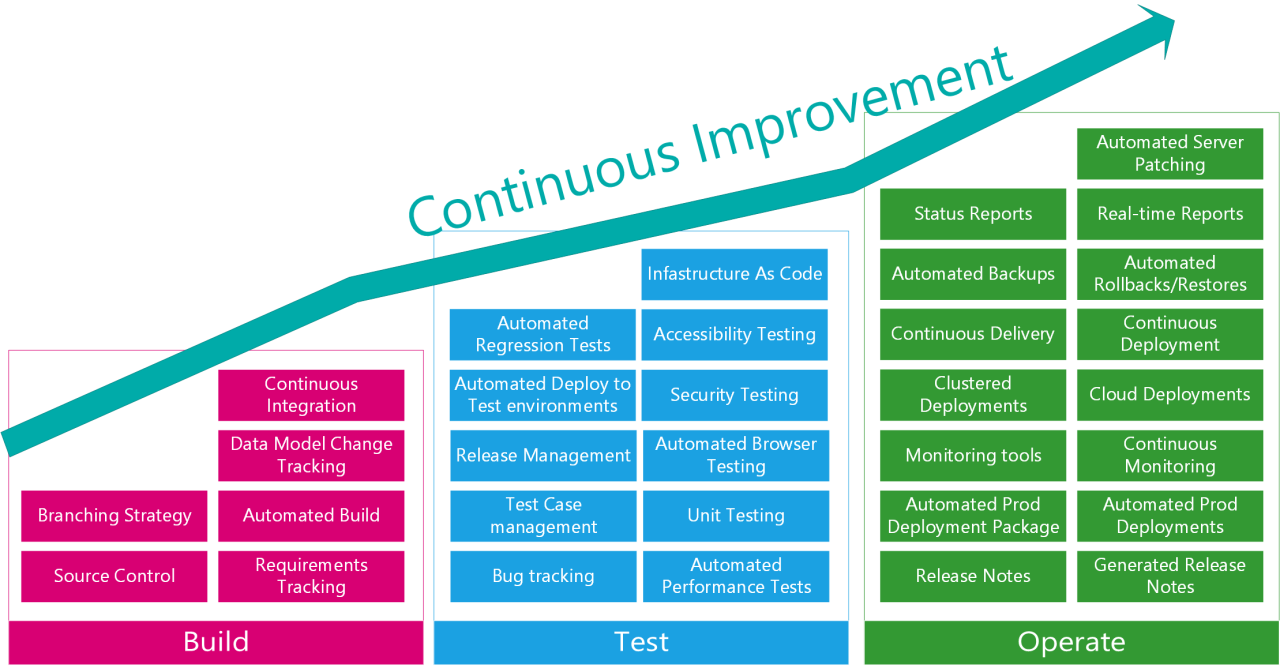In the fast-paced world of technology, speed, efficiency, and reliability are paramount. Businesses are constantly striving to deliver high-quality software faster than ever before to meet evolving customer demands and stay ahead of the competition. This relentless pursuit of agility has led to the widespread adoption of DevOps, a transformative cultural and operational movement that is reshaping how organizations develop, deploy, and operate software. More than just a set of tools or practices, DevOps is fundamentally about breaking down silos, fostering collaboration, and embracing automation across the entire software development lifecycle.
The Genesis of DevOps: A Response to Traditional Challenges
Before the advent of DevOps, the traditional software development landscape was often characterized by distinct, often adversarial, departments: Development (Dev) and Operations (Ops). Developers focused on writing code and introducing new features, while operations teams were responsible for maintaining system stability and deploying software into production environments. This separation, while seemingly logical, frequently led to friction, delays, and a lack of accountability.
Consider the common scenario: Development would “throw code over the wall” to Operations, often with insufficient documentation or understanding of the production environment’s nuances. Operations, in turn, would struggle to deploy and manage this new code, leading to late-night emergency fixes, finger-pointing, and a general sense of distrust. This adversarial relationship resulted in:
A. Slow Release Cycles: Deployments were infrequent, complex, and high-risk, making it difficult for organizations to respond quickly to market changes. B. Quality Issues: Bugs discovered in production were costly and damaging to customer satisfaction, often stemming from a lack of environmental parity between development and operations. C. Resource Inefficiency: Time was wasted on manual tasks, communication breakdowns, and rework, diverting resources from innovation. D. Burnout: Both Dev and Ops teams experienced high stress due to constant firefighting and a lack of shared goals. E. Customer Dissatisfaction: Ultimately, the end-users bore the brunt of slow updates, buggy software, and unreliable services.
DevOps emerged as a direct response to these systemic issues, advocating for a holistic approach that integrates people, processes, and technology to bridge the gap between development and operations.
Core Pillars of DevOps
DevOps is built upon several foundational principles that guide its implementation and define its success. These pillars are interconnected and mutually reinforcing, creating a virtuous cycle of continuous improvement.
1. Culture and Collaboration: The Human Element
At its heart, DevOps is a cultural shift. It emphasizes empathy, shared responsibility, and open communication. It’s about moving away from an “us vs. them” mentality to a collaborative “we” approach.
A. Shared Goals and Metrics: Both development and operations teams align on common objectives, such as faster time-to-market, fewer production incidents, and higher customer satisfaction. Performance is measured jointly. B. Blameless Postmortems: When incidents occur, the focus shifts from finding fault to understanding root causes and implementing preventative measures. This fosters a safe environment for learning and continuous improvement. C. Cross-functional Teams: Encouraging engineers to understand both development and operational aspects of software delivery promotes holistic thinking and problem-solving. This often involves embedding operations specialists within development teams and vice versa. D. Open Communication Channels: Tools and practices that facilitate constant, transparent communication (e.g., Slack, Microsoft Teams, stand-up meetings) are crucial for sharing information, progress, and challenges. E. Empathy and Trust: Recognizing the unique pressures and perspectives of both development and operations teams builds trust and fosters a supportive environment where individuals feel comfortable taking risks and sharing ideas.
2. Automation: Streamlining the Workflow
Automation is a cornerstone of DevOps, eliminating manual, repetitive, and error-prone tasks. This not only speeds up the delivery pipeline but also enhances reliability and consistency.
A. Infrastructure as Code (IaC): Managing and provisioning infrastructure through code (e.g., using Terraform, Ansible, CloudFormation) ensures consistency, reproducibility, and version control. This treats infrastructure like any other piece of software. B. Continuous Integration (CI): Developers frequently merge their code changes into a central repository, where automated builds and tests are run to detect integration issues early. This prevents “integration hell” and ensures code quality. C. Continuous Delivery (CD) / Continuous Deployment (CD): * Continuous Delivery: Ensures that code is always in a deployable state, ready to be released to production at any time. It automates all steps up to the final deployment approval. * Continuous Deployment: Takes Continuous Delivery a step further by automatically deploying every validated change to production without manual intervention. This requires a very high level of trust in the automated testing and monitoring. D. Automated Testing: Comprehensive automated test suites (unit, integration, system, performance, security) are integrated into the pipeline to validate code functionality and quality at every stage, significantly reducing the risk of defects reaching production. E. Automated Monitoring and Alerting: Setting up automated systems to continuously monitor application and infrastructure performance, availability, and security provides real-time insights and triggers alerts for anomalies, enabling proactive problem resolution.
3. Continuous Feedback: The Engine of Improvement
DevOps emphasizes a closed-loop feedback system, where insights from production are fed back into the development process to drive continuous improvement.
A. Monitoring and Logging: Comprehensive logging and monitoring tools (e.g., Prometheus, Grafana, ELK Stack, Splunk) provide visibility into application performance, user behavior, and infrastructure health in real-time. B. User Feedback: Actively soliciting and incorporating feedback from end-users helps identify pain points and prioritize new features or improvements. This can involve A/B testing, user surveys, and direct communication channels. C. Incident Management and Postmortems: As mentioned earlier, learning from incidents is critical. Blameless postmortems analyze what happened, why it happened, and what can be done to prevent recurrence, feeding lessons learned back into the development and operations processes. D. Performance Analytics: Analyzing performance data helps identify bottlenecks, optimize resource utilization, and improve the overall efficiency of applications and infrastructure. E. Security Scans and Feedback: Integrating security scans (SAST, DAST, SCA) throughout the pipeline provides immediate feedback on vulnerabilities, allowing developers to address them early in the development cycle.
4. Lean Thinking: Eliminating Waste
Inspired by lean manufacturing principles, DevOps aims to eliminate waste throughout the software delivery value stream.
A. Value Stream Mapping: Identifying all the steps involved in delivering software from idea to production, and then optimizing or eliminating non-value-adding activities. B. Minimizing Work in Progress (WIP): Limiting the number of tasks being worked on simultaneously to reduce context switching, improve focus, and accelerate throughput. C. Small Batch Sizes: Delivering smaller, more frequent changes reduces risk, simplifies troubleshooting, and speeds up feedback loops. It’s easier to find a needle in a small haystack than a large one. D. Just-in-Time Delivery: Delivering features or fixes only when they are needed, reducing inventory and overhead. E. Continuous Learning and Experimentation: Fostering a culture where teams are encouraged to experiment, learn from failures, and continuously improve their processes and tools.
The DevOps Toolchain: Enabling the Principles
While DevOps is primarily a cultural movement, a robust set of tools is essential to enable its principles. The “DevOps toolchain” refers to the various categories of software tools that facilitate collaboration, automation, and feedback across the software delivery pipeline.
A. Planning and Project Management: Tools for managing backlogs, sprints, and tasks (e.g., Jira, Trello, Azure DevOps). B. Source Code Management (SCM): Version control systems for managing code changes and collaboration (e.g., Git, GitHub, GitLab, Bitbucket). C. Build Automation: Tools for compiling code, running tests, and creating deployable artifacts (e.g., Jenkins, Maven, Gradle, Azure Pipelines, GitHub Actions). D. Continuous Integration (CI) / Continuous Delivery (CD) Platforms: Orchestrating the entire pipeline from code commit to deployment (e.g., Jenkins, GitLab CI/CD, CircleCI, Travis CI, Azure DevOps). E. Configuration Management: Automating the configuration of servers and infrastructure (e.g., Ansible, Puppet, Chef, SaltStack). F. Containerization and Orchestration: Packaging applications and their dependencies, and managing containerized workloads (e.g., Docker, Kubernetes, OpenShift). G. Cloud Platforms: Providing scalable and flexible infrastructure services (e.g., AWS, Azure, Google Cloud Platform). H. Monitoring and Logging: Collecting, analyzing, and visualizing operational data (e.g., Prometheus, Grafana, ELK Stack, Splunk, Datadog). I. Testing and Quality Assurance: Automated testing frameworks and tools (e.g., Selenium, JUnit, Cypress, JMeter, SonarQube). J. Security Scanning: Tools for identifying vulnerabilities in code and infrastructure (e.g., Nessus, OWASP ZAP, SonarQube, security features integrated into CI/CD pipelines). K. Collaboration and Communication: Tools for team communication and knowledge sharing (e.g., Slack, Microsoft Teams, Confluence).
It’s important to note that no single tool or set of tools defines DevOps. The choice of tools depends on the organization’s specific needs, existing infrastructure, and team expertise. The key is to integrate these tools seamlessly to create an automated, end-to-end pipeline.
Implementing DevOps: A Phased Approach
Adopting DevOps is a journey, not a destination. It typically involves a phased approach, starting with small, manageable steps and gradually expanding its scope across the organization.
Phase 1: Small Steps and Pilot Projects
A. Identify a Pain Point: Start by targeting a specific area of friction or inefficiency between Dev and Ops, or a single application that needs faster delivery. B. Form a Cross-Functional Team: Create a small, dedicated team comprising members from both development and operations, empowered to experiment and make decisions. C. Automate a Key Process: Begin by automating one critical, manual step in the delivery pipeline, such as a build process or a deployment to a staging environment. D. Establish Shared Metrics: Define clear, measurable goals for the pilot project, focusing on improvements in release frequency, defect rates, or mean time to recovery (MTTR). E. Celebrate Small Wins: Acknowledge and communicate early successes to build momentum and demonstrate the value of DevOps.
Phase 2: Expanding Scope and Standardizing Practices
A. Expand Automation: Gradually automate more steps in the pipeline, including testing, infrastructure provisioning, and monitoring setup. B. Introduce IaC: Begin managing infrastructure through code to ensure consistency and repeatability across environments. C. Implement CI/CD: Establish robust CI/CD pipelines that automatically build, test, and potentially deploy code changes. D. Foster Blameless Culture: Conduct blameless postmortems for incidents, focusing on systemic improvements rather than individual blame. E. Share Knowledge: Document best practices, create internal communities of practice, and encourage knowledge sharing between teams.
Phase 3: Continuous Improvement and Cultural Entrenchment
A. Embed DevOps Principles: Integrate DevOps thinking into all aspects of software development and operations, from design to production. B. Scale Practices Across Organization: Roll out successful DevOps practices and tools to more teams and applications. C. Invest in Training and Upskilling: Provide ongoing training for engineers to develop new skills in automation, cloud technologies, and security. D. Measure and Iterate: Continuously monitor key metrics, gather feedback, and adapt processes and tools based on what is learned. E. Promote a Learning Culture: Encourage experimentation, innovation, and a willingness to embrace change as a constant.
Benefits of Embracing DevOps Culture
The widespread adoption of DevOps is driven by its tangible benefits, which extend across various aspects of an organization.
A. Faster Time-to-Market: By automating processes and fostering collaboration, organizations can release new features and updates much more frequently, responding quickly to market demands. B. Improved Software Quality: Automated testing, continuous integration, and constant feedback loops lead to fewer defects, more stable applications, and a better user experience. C. Increased Efficiency and Productivity: Automation eliminates manual toil, freeing up engineers to focus on higher-value, innovative work. Reduced rework and fewer incidents also contribute to greater efficiency. D. Enhanced Reliability and Stability: Consistent environments, automated deployments, and proactive monitoring lead to more stable systems and faster recovery from outages. E. Better Collaboration and Communication: Breaking down silos fosters stronger relationships between teams, leading to improved communication and shared understanding. F. Reduced Costs: While initial investment in tools and training is required, DevOps often leads to long-term cost savings through reduced operational overhead, fewer production incidents, and more efficient resource utilization. G. Higher Employee Morale: Reduced stress from firefighting, increased autonomy, and a sense of shared purpose contribute to a more positive work environment and higher job satisfaction. H. Stronger Security Posture: Integrating security practices (DevSecOps) throughout the pipeline helps identify and address vulnerabilities early, leading to more secure software. I. Competitive Advantage: Organizations that can innovate and deliver software faster and more reliably gain a significant edge in the marketplace.
Challenges in DevOps Adoption
Despite its numerous benefits, implementing DevOps is not without its challenges. Organizations may encounter various hurdles during their transformation journey.
A. Cultural Resistance: The biggest hurdle is often resistance to change, particularly from teams accustomed to traditional ways of working. Overcoming entrenched mindsets requires strong leadership and clear communication. B. Legacy Systems: Integrating DevOps practices with outdated or monolithic legacy systems can be complex and time-consuming. C. Skill Gaps: Teams may lack the necessary skills in automation tools, cloud platforms, or specific DevOps practices, requiring investment in training and upskilling. D. Tooling Sprawl: The vast array of DevOps tools can be overwhelming, leading to confusion and inefficient toolchains if not managed carefully. E. Security Concerns (Early Stages): Initially, some organizations may fear that rapid deployments could compromise security, necessitating a robust DevSecOps approach from the outset. F. Lack of Executive Buy-in: Without strong support from senior management, DevOps initiatives may struggle to gain traction and secure necessary resources. G. Measuring Success: Defining clear, measurable metrics for DevOps success can be challenging, as the benefits are often holistic and not always immediately quantifiable. H. Burnout from Continuous Pacing: The demand for continuous delivery can sometimes lead to burnout if not managed with sustainable practices and clear work-life boundaries.
The Future of DevOps: Emerging Trends
DevOps is a continuously evolving field, and several trends are shaping its future trajectory.
A. DevSecOps: Integrating security as an integral part of the entire DevOps pipeline, shifting security “left” to earlier stages of development. B. AIOps: Leveraging Artificial Intelligence and Machine Learning to automate IT operations, predict incidents, and optimize performance based on vast amounts of operational data. C. FinOps: A cultural practice that combines finance and operations to help organizations manage cloud costs effectively, fostering financial accountability in cloud spending. D. Platform Engineering: Building internal developer platforms that abstract away infrastructure complexities, providing self-service capabilities for developers and accelerating feature delivery. E. GitOps: Managing infrastructure and applications through Git, using Git as the single source of truth for declarative infrastructure and application definitions. F. Serverless and FaaS (Functions as a Service): The increasing adoption of serverless architectures further abstracts away infrastructure management, allowing developers to focus purely on code. G. Edge Computing: Extending DevOps principles to manage applications and infrastructure deployed at the edge of the network, closer to data sources and users. H. Observability: Moving beyond traditional monitoring to gain deeper insights into the internal state of systems, enabling proactive issue detection and faster debugging.
Conclusion
DevOps is no longer just a buzzword; it has become an evolutionary imperative for organizations striving for agility, resilience, and competitive advantage in the digital age. By dismantling traditional silos, embracing automation, fostering a culture of collaboration, and committing to continuous learning, businesses can significantly accelerate their software delivery, improve quality, and ultimately deliver greater value to their customers.
The journey to a full DevOps transformation requires commitment, patience, and a willingness to embrace change at every level. However, the rewards—faster innovation, more reliable systems, and happier teams—make it an endeavor well worth pursuing. As technology continues to advance at an unprecedented pace, the principles of DevOps will remain fundamental to navigating the complexities of modern software development and ensuring sustained success.














